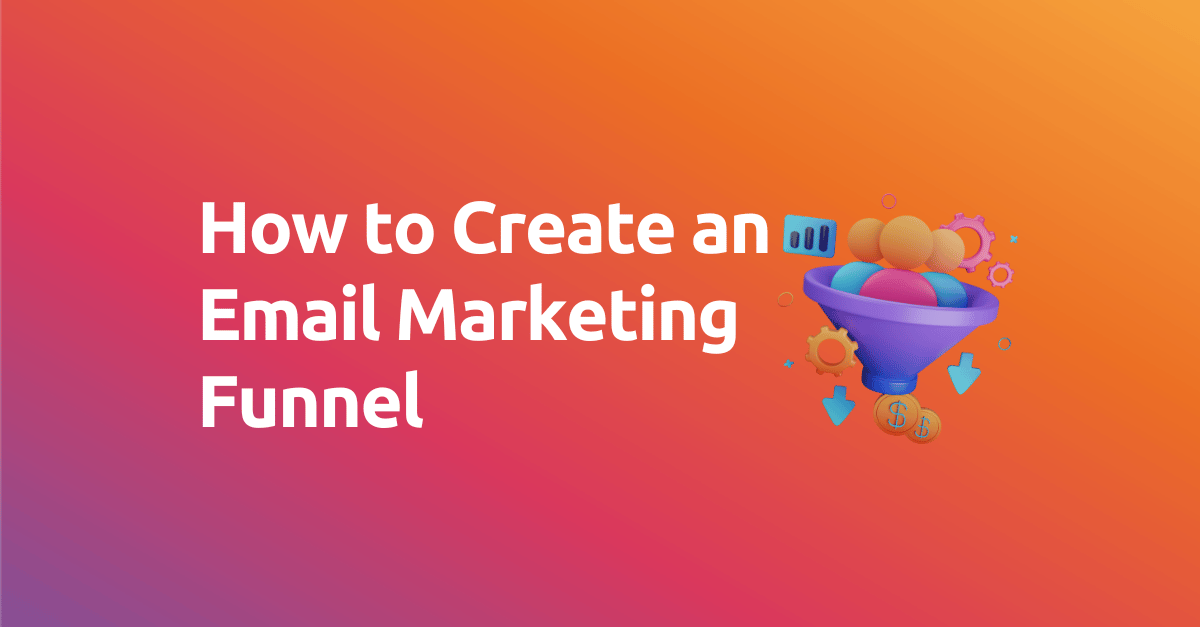Creating a newsletter is a powerful way to engage your audience, build brand loyalty, and drive traffic to your website. Whether you're a business owner, marketer, or blogger, newsletters offer a direct line of communication with your subscribers. In this guide, we’ll explore essential tips and best practices to help you create an effective newsletter.
What is a Newsletter and Why is it so Important for your Business?
A newsletter is a regular email communication sent to a list of subscribers, typically with the goal of sharing updates, news, promotions, or valuable content related to a business or organization. Newsletters allow companies to stay connected with their audience, building relationships over time through consistent and relevant communication.
Unlike other forms of email marketing, newsletters are less focused on immediate sales and more on nurturing long-term engagement by providing value to subscribers. Whether you’re sharing blog posts, exclusive deals, or company news, newsletters help keep your brand top of mind and foster trust with your audience.
The Importance of Newsletters for Your Business
-
Building and Maintaining Customer Relationships
Newsletters are an excellent way to keep in touch with your audience regularly. By consistently offering relevant content, you can strengthen the relationship with your customers, building loyalty over time. -
Driving Traffic and Engagement
A well-crafted newsletter can drive traffic back to your website, blog, or social media channels. Including links to relevant content encourages your readers to engage with your brand further. -
Establishing Authority and Trust
Regularly sending informative and helpful content establishes your business as an authority in your industry. This is essential for building credibility and trust with your audience. -
Personalized Communication
Through a Email Marketing Campaign, businesses can segment their audience and deliver tailored messages. This increases the relevance of the content for each group, improving engagement and conversion rates.
In conclusion, newsletters are an essential component of a successful digital strategy. They help businesses stay connected with their audience, nurture relationships, and build trust, all while supporting broader marketing efforts.
Step 1: Define Your Newsletter’s Purpose
The first and most crucial step in creating a successful newsletter is defining its purpose. Without a clear objective, your newsletter may lack direction, which can result in low engagement and wasted effort. Understanding why you're sending the newsletter and what you hope to achieve will guide every other aspect of its creation, from content to design.
Why Defining a Purpose is Key
When you know the purpose of your newsletter, it becomes easier to tailor your content to the needs of your audience. This focus not only enhances reader engagement but also aligns your newsletter with your overall marketing goals. A clear purpose can range from educating your audience, promoting products, or driving traffic to your website.
Here are some common goals for newsletters:
-
Increase Sales and Promotions
If your goal is to boost sales, your newsletter will focus on product highlights, special offers, or new launches. This approach is more transactional but can be very effective for converting leads into customers. -
Build and Strengthen Customer Relationships
Newsletters that aim to foster a deeper connection with subscribers often share behind-the-scenes content, stories, or insights that humanize your brand. This approach helps build trust and loyalty over time. -
Deliver Educational Content
Some newsletters focus on providing valuable information to their audience. These might include how-to guides, tips, or industry insights that position your business as an expert in the field. Following best email marketing practices, educational content can significantly boost engagement rates, as it offers immediate value to your subscribers. -
Drive Traffic to Your Website
A common objective for newsletters is to direct traffic back to your website or blog. This can be achieved by linking articles, new product releases, or landing pages in your newsletter.
How to Align Your Newsletter with Business Goals
Once you've established the primary purpose of your newsletter, ensure that it aligns with your broader business goals. For example, if one of your business goals is to expand your customer base, your newsletter should focus on lead generation by offering free resources or special discounts for new subscribers.
In conclusion, defining your newsletter’s purpose is a critical foundation for success. By staying focused on a clear objective, you can create content that resonates with your audience and supports your broader email marketing strategy.
Step 2: Build and Segment Your Email List
Building and segmenting your email list is essential for creating targeted, effective newsletters. Start by gathering subscribers through various channels, such as sign-up forms on your website, social media promotions, or offering exclusive content like eBooks or discounts. The key is to attract individuals genuinely interested in your content or products.
Once you have a list, segment it based on factors like demographics, purchase behavior, or engagement levels. Segmentation allows you to send personalized content that resonates with different groups, which improves open rates, click-through rates, and overall engagement. By tailoring your messages, you’re more likely to achieve better results from your email marketing efforts.
Step 3: Choose the Right Email Marketing Platform
Selecting the right tool from the many email marketing platforms available is a crucial step for successful newsletter campaigns. The platform you choose should align with your business needs, offering features like automation, template design, list management, and analytics to streamline your efforts.
Popular email marketing platforms such as Mailchimp, Sendinblue, and Constant Contact provide user-friendly interfaces, pre-designed templates, and the ability to segment your audience. When selecting a platform, consider factors like ease of use, scalability, pricing, and the ability to integrate with your existing tools. Choosing the right platform will help you optimize your email marketing campaigns and improve overall performance.
Step 4: Design an Engaging and Mobile-Friendly Layout
Creating an engaging and mobile-friendly layout is essential for ensuring that your newsletter captures attention and provides a smooth user experience across devices. With a growing number of users checking emails on their phones, your design must be responsive, adapting seamlessly to various screen sizes.
Start with a clean, visually appealing layout that includes a balance of images and text. Use headers, subheaders, and bullet points to break up content, making it easy to scan. Ensure that buttons and calls to action (CTAs) are large enough to be clicked on mobile devices.
Most Email marketing tools offer mobile-responsive templates, simplifying the design process. Always test your newsletter on different devices before sending it out to ensure readability and functionality. An effective, mobile-optimized design improves engagement rates and enhances the overall user experience.
Step 5: Write Compelling Subject Lines and Content
Crafting engaging Subject Lines and high-quality content is key to capturing your audience's attention and ensuring they engage with your email. The subject line is the first thing your subscribers see, so it needs to be enticing enough to encourage them to open the email. A good subject line is clear, concise, and creates a sense of curiosity or urgency. Personalization, such as including the recipient’s name, can also boost open rates.
Once the email is opened, the Email Marketing Content should deliver on the promise of the subject line. Keep your message clear and focused, offering valuable information or incentives to the reader. Break up the text with headings, bullet points, and visuals to make it easily digestible. Your content should always align with your audience's interests and the goals of your newsletter, whether it’s driving sales, educating, or fostering engagement.
In summary, compelling subject lines paired with valuable, well-structured content lead to better open rates, higher engagement, and ultimately, more successful email marketing campaigns.
Step 6: Use Dynamic and Interactive Elements
Incorporating Dynamic Content into your newsletters can significantly enhance engagement and keep your audience interested. One of the most effective ways to achieve this is by choosing to add video in email rather than relying solely on clickable images or GIFs. Videos capture attention more effectively and can convey information quickly and engagingly. For instance, a short video demonstration of a product or a personalized message can create a more profound connection with your subscribers.
Platforms like Viewed specialize in enabling video integration within email campaigns, ensuring that videos are easy to view and interactive. When recipients see a video thumbnail with a play button in their inbox, they are more likely to click through, leading to higher engagement rates.
In addition to videos, utilizing effective CTAs (Call-to-Action) within your newsletter is crucial. Ensure that your CTAs are prominently displayed and encourage readers to take specific actions, such as visiting your website, signing up for an event, or exploring new products. By combining dynamic video content with compelling CTAs, you create a more engaging and interactive experience that can significantly boost the effectiveness of your email marketing campaigns.
Step 7: Optimize for Deliverability and Avoid Spam Filters
Ensuring your emails reach your subscribers' inboxes is crucial for the success of your newsletter. This requires implementing effective email marketing techniques to optimize deliverability and avoid being filtered as spam.
First, use a reputable email marketing service that adheres to industry standards. These platforms typically have built-in tools to help you manage your sender reputation, which is critical for avoiding spam filters. Additionally, make sure to authenticate your email domain with SPF, DKIM, and DMARC records. These measures help prove that your emails are legitimate and can significantly reduce the likelihood of being flagged as spam.
Another important factor is your email content. Avoid using excessive promotional language or spammy phrases, such as "FREE!" or "Act Now!" Instead, focus on providing valuable and relevant content that resonates with your audience.
Regularly clean your email list by removing inactive subscribers or those who have unsubscribed. A healthy list with engaged users improves your sender reputation and minimizes the risk of triggering antispam filters.
Lastly, encourage your subscribers to add your email address to their contacts or safe sender list. This simple action can drastically improve your deliverability rates. By implementing these strategies, you can enhance the effectiveness of your email marketing efforts and ensure your newsletters reach your intended audience.
Step 8: Test, Analyze, and Improve Your Newsletter Performance
To create effective newsletters, it’s essential to continually test, analyze, and improve their performance. This process ensures that your content resonates with your audience throughout their customer journey and helps you refine your email marketing strategy.
Start by conducting A/B testing on different elements of your newsletter, such as subject lines, layouts, content formats, and call-to-action placements. By comparing the performance of two variations, you can identify which version yields better engagement metrics, such as open rates and click-through rates.
Utilize analytics tools provided by your email marketing platform to gather insights on how subscribers interact with your newsletters. Key performance indicators (KPIs) to focus on include open rates, click-through rates, conversion rates, and unsubscribe rates. Analyzing these metrics allows you to understand where your audience is in their customer journey and tailor your content to meet their needs more effectively.
Feedback is also invaluable; consider sending surveys or feedback forms to your subscribers to gather insights on their preferences and interests. This information can help you create more personalized and relevant content.
Based on your testing and analysis, continually iterate on your newsletter strategy. Experiment with different formats, content types, and frequency of sending. By regularly refining your approach, you can enhance your newsletters' effectiveness and ensure they provide value to your audience, ultimately improving their overall customer experience.




.png)
